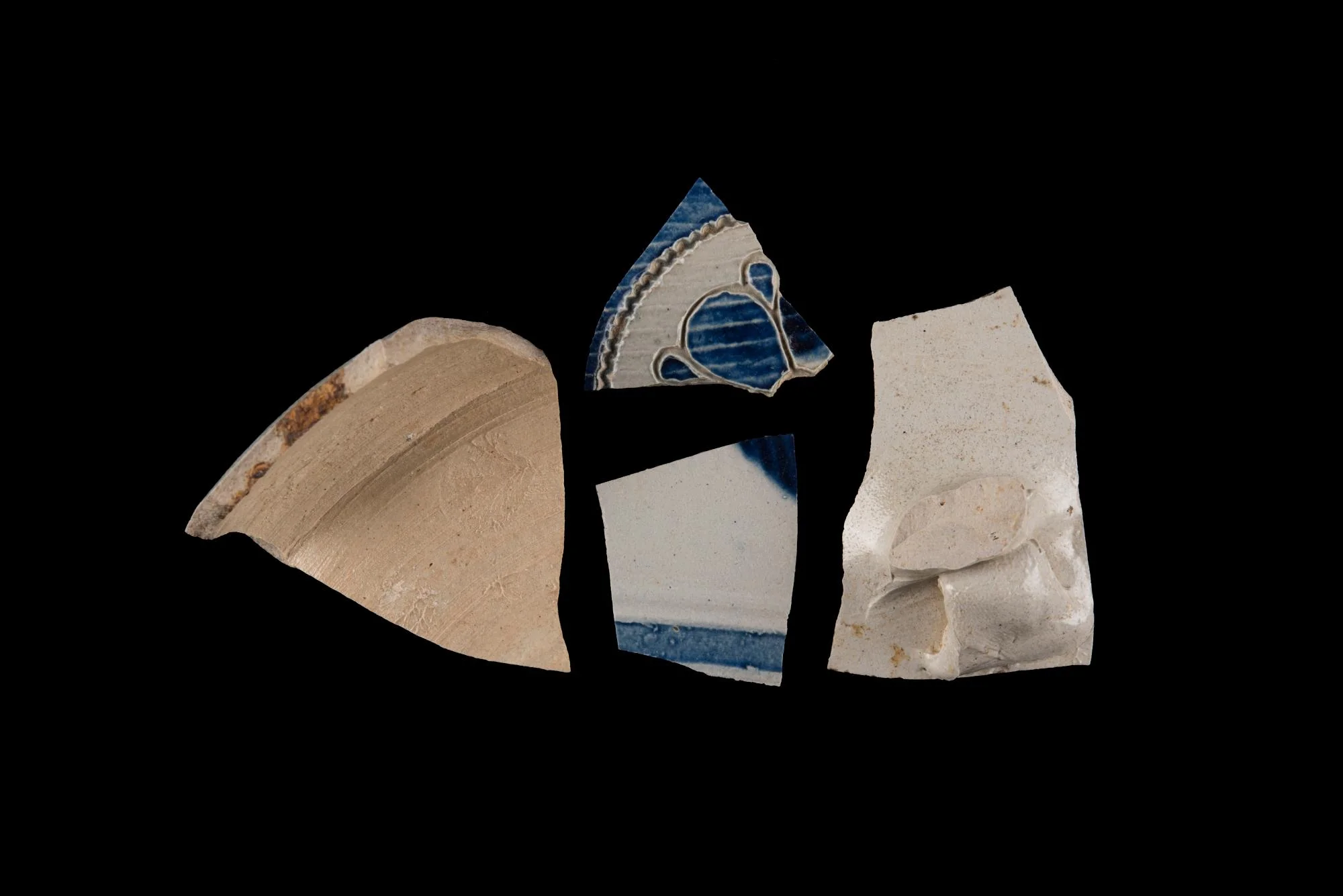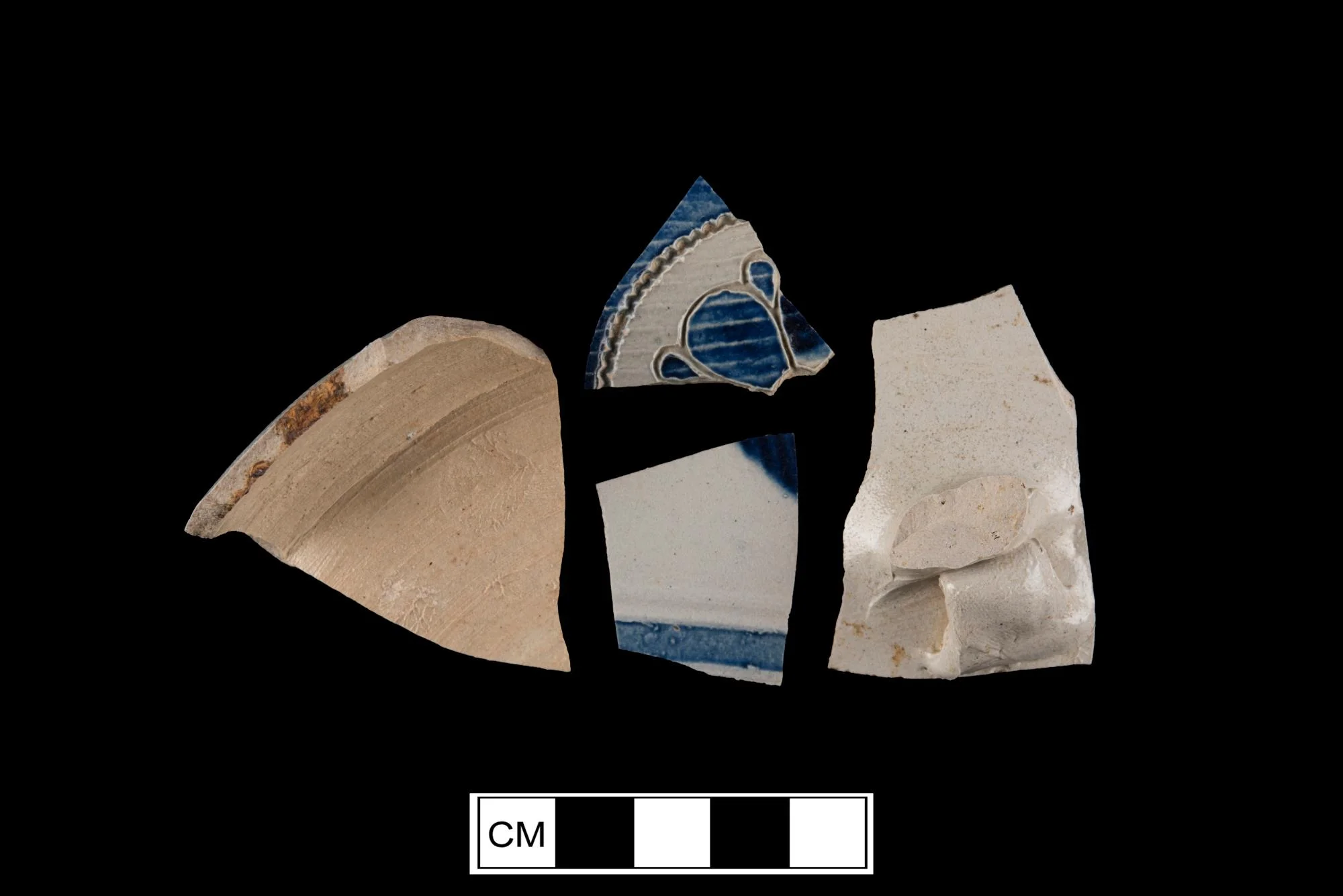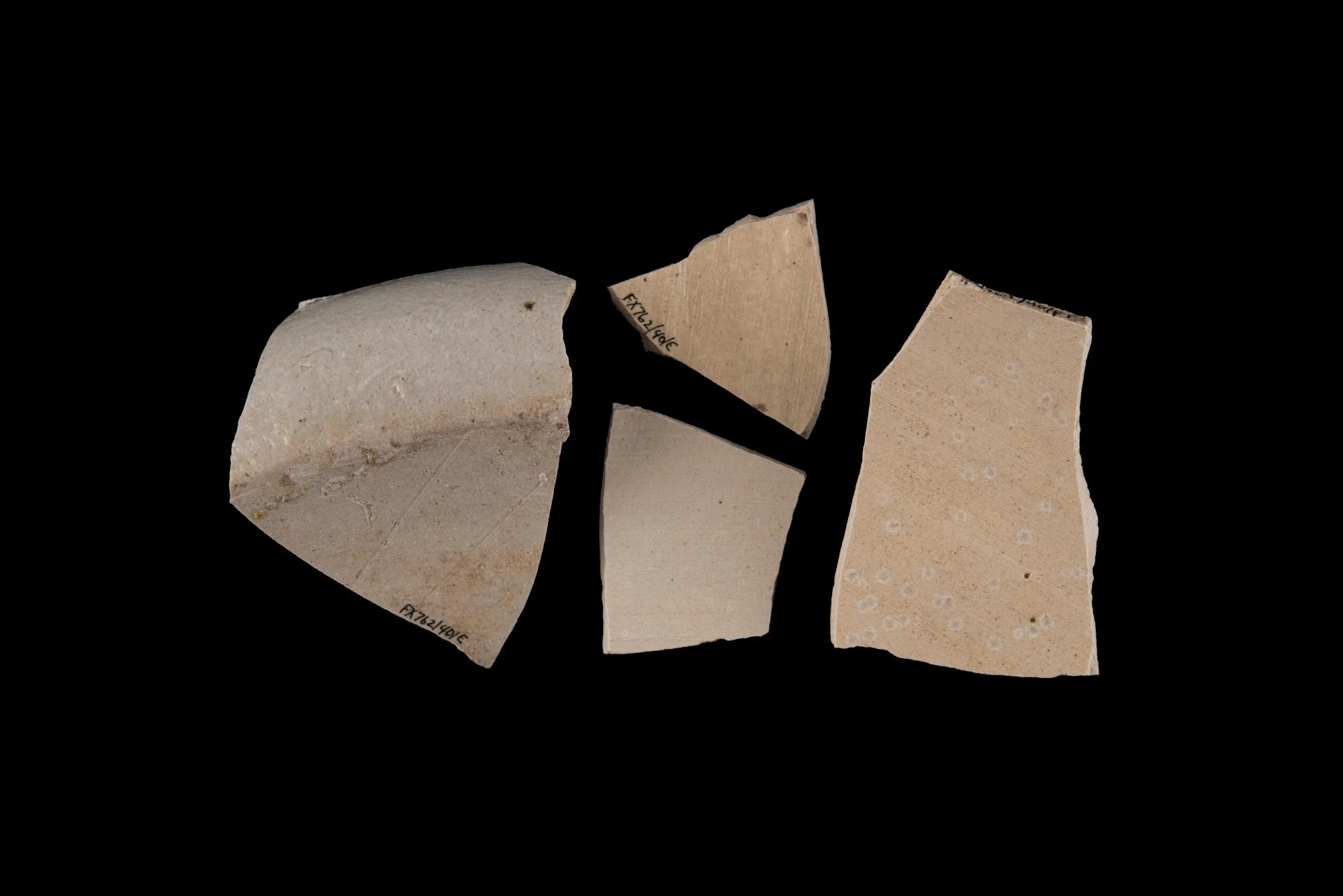Notes
This is a fragment of a stoneware chamberpot produced in the Westerwald region of Germany. German stonewares played an important part of the English and colonial ceramic market of the eighteenth century. These vessels were available in a variety of forms but most commonly as jugs, mugs and chamberpots, and were most often decorated with a combination of incised and molded decorations enhanced with the use of cobalt and manganese underglaze painting. Generally, the prevalence of these kinds of stonewares diminished throughout the eighteenth century.
Stoneware was an excellent ceramic for forms such as chamberpots, as it provided a relatively cheap, strong, waterproof vessel. The fragments here clearly show the vessel’s flat bottomed base, and the attachment of a single thick strap handle, as well as, the characteristic incised and painted floral medallions that often adorned chamberpots in the mid-eighteenth century. Chamberpots would have been used by the full range of the free and enslaved community at Mount Vernon.
Object Type
Has it Been Conserved?
No
Where Was It Found?
Project Site: House for Families [more details]
Material
Vessel
Manufacturing Technology
Form
Completeness
Date
1710-1765
Country of Origin
Illustration shows object in comparison to the size of a quarter
Object Number
1723807. WRSW V.1
DAACS Number
1723807
Project: House for Families
The structure identified as the “House for Families” on the 1787 Vaughan plan likely housed the majority of the enslaved population living at the Mansion House Farm for much of the second half of the eighteenth century. The building was in existence from circa 1760 until it was demolished in late 1792 or early 1793. The archaeological evidence for the structure consisted of a brick-lined storage cellar (44FX762/40-47) measuring roughly six feet by six feet. Historically the cellar served as a handy trash receptacle once it ceased to be used for its original storage function, and through extensive excavation has yielded an extremely rich assemblage of household refuse. The analysis of these remains offers the opportunity to study important aspects of the daily lives of Mount Vernon's enslaved community.
See All Objects From this Dig


 Ceramic
Ceramic